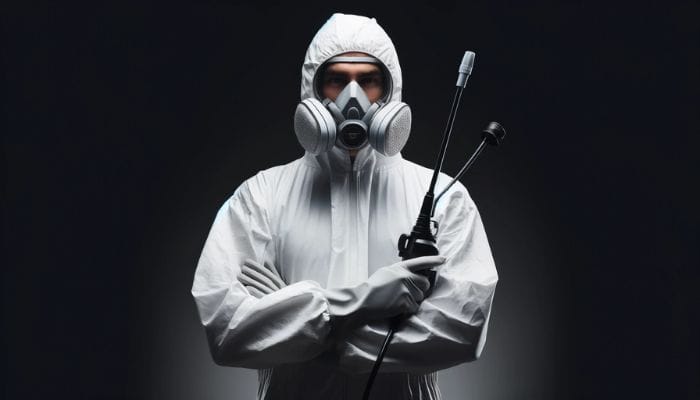Pests are unwanted guests that can invade our homes and gardens, causing distress and potential health hazards. Fortunately, through knowledge and preparation, homeowners can effectively manage and prevent common pests.
Here are six expert-backed strategies to help you stay one step ahead of bugs, critters, and creepy crawlies.
1. Prevention is Key
Seal entry points
Critters can be resourceful when it comes to finding a way into your home. The first line of defense is to inspect your house for any possible entry points. This includes cracks in the walls, gaps in windows, and any openings in your foundation.
Seal these with the appropriate materials, such as silicone-based caulk for smaller openings and metal screens for larger holes.
Maintain cleanliness
Pests are attracted to food and water sources, and leaving them accessible only encourages infestations. Regularly clean your kitchen, dining areas, and storage spaces to reduce the availability of food for pests.
Ensure that trash cans are sealed and that any standing water is promptly drained or cleaned to eliminate potential breeding grounds for insects.
2. Identifying Common Pests
Different types of pests
Awareness of the pests that are common in your area is essential. Whether it’s roaches, ants, or rodents, learn to recognize the signs of each pest’s presence. This could be droppings, chew marks, or unusual smells. Identifying pests early on can prevent a small problem from becoming a large, difficult-to-manage infestation.
Understanding infestation signs
It’s crucial to know what to look for when it comes to signs of infestation. For example, a ‘musty’ smell might indicate mold but could also be a sign of bed bugs. Pest-specific infestation signs can help you act quickly to address the problem before it escalates.
3. Professional Pest Control Services
Knowing when to call in the pros
Despite your best efforts, there are times when professional intervention is necessary. If an infestation is large, persistent, or poses potential health risks, it’s time to contact a pest control service. Particularly in areas prone to specific types of pests, such as Fairfield, CT, consulting with local pest control experts can be crucial.
Providers of pest control in Fairfield, CT, and other areas recommend contacting experts, as they offer specialized knowledge on regional pests and access to more effective treatments not available to the average homeowner. Whether it’s a severe infestation or pests that pose a risk to health and property, professional pest control services can provide the necessary expertise to resolve the issue efficiently and effectively.
What to expect from pest control services
When hiring a professional, expect an initial inspection to identify the problem. Then, a treatment plan will be presented, which can include a variety of methods from traps to pesticides. The service should also provide advice on preventing future infestations.
4. Natural Remedies and DIY Solutions
Essential oils and vinegar
Some natural substances can be effective repellents against certain pests. Essential oils like lavender, peppermint, and eucalyptus, when diluted and sprayed in problem areas, can deter pests without the use of harmful chemicals. Similarly, a spray bottle with a water and vinegar solution can keep ants and spiders at bay.
DIY traps and barriers
Simple traps and barriers can be constructed using household items. A sticky tape can help control bugs, especially in high-traffic areas like under furniture or along walls. For rodents, strategically placing homemade traps with bait can help reduce the population.
5. Integrated Pest Management
The IPM approach
Integrated Pest Management (IPM) is a comprehensive, eco-friendly approach to pest control that combines multiple strategies. This includes sanitation practices, cultural changes, mechanical control methods, and as a last resort, the use of low-toxicity chemical controls.
Routine monitoring
A key component of IPM is the regular monitoring of pest populations. Keep an eye on areas that are prone to infestations and act quickly at the first sign of pests to prevent them from establishing living quarters in your home.
6. Sustainable Pest Control Practices
Choosing eco-friendly options
More people are becoming conscious of the environmental impact of pest control. Fortunately, there are eco-friendly options available that are just as effective as traditional treatments. Look for pest control products that are labeled as safe for the environment.
The impact on the environment
Using sustainable pest control practices can decrease the amount of chemicals released into the environment. This is not only beneficial for your local ecosystem but also for the health of your family and pets.
In conclusion, a proactive approach to pest control, including prevention, identification, and treatment, is essential for maintaining a healthy living environment. By following these six tips, you can ensure your home remains a haven free from unwelcome critters.
Remember, the goal is not just to eliminate pests but to control their presence in a safe, effective, and lasting way.

